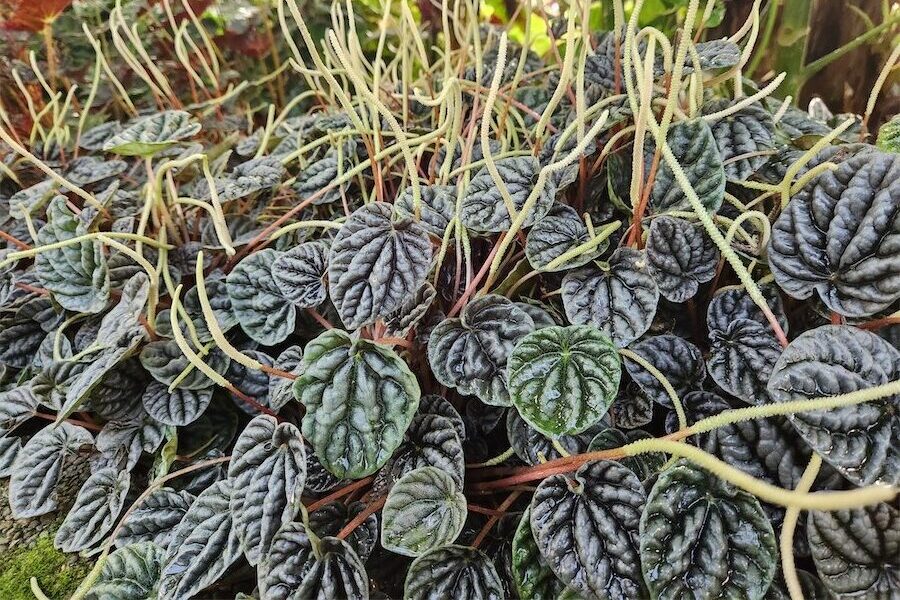
Gardening columnist JACKIE WARBURTON writes about the attractive foliage of peperomias and the challenge of dealing with apple scab.
I have been growing a few peperomias on a window sill that I have on the southern side of my house with very little sun but bright light.

Available in many colours, they have unusual, attractive foliage and, in some species, can have deep ridges.
They come with names such as Emerald Ripple or Speckled Ripple and are easy to grow.
Botanically, a succulent with fleshy leaves that store water, they share the same characteristics of watering and care that a succulent needs.
They need to be kept out of cold drafts and with a good amount of bright light but no sun, they’ll flower well.
Their flowers are unusual cream-coloured spikes and not considered attractive because these plants are mainly grown for the beauty of their foliage.
To get a faster growing plant remove the flower spikes. Or they can be left to be enjoyed, either way the plant will be fine.
If your peperomia needs a bigger pot, wait for the warmer weather. Use a potting mix that is slightly acidic, mixed in with home compost to get them going. Water sparingly with tepid water and avoid any overhead watering. They grow alongside other indoor plants that like the same conditions such as begonias, streptocarpus and African violets.

APPLE scab was a terrible issue last summer. Now’s a good time to get on to any fungus spraying while there are no leaves on the trees.The fungicide can get into crevices and cracks of the bark and remove any overwintering spores waiting for the warmer weather.
Apple scab can be difficult to get rid of. Affected apples are inedible and need to be thrown into the green bin or taken to the green waste tip.
The fungus affects all parts of the tree, from leaves to fruit, and spreads fast given the right conditions.
On a sunny, wind free morning, apply a copper-based fungicide or wettable sulphur every few weeks up until flowering to it in check for this season.
The timing is also right to put boron and dolomite lime in the soil as the buds and leaves are forming to get apple trees off to a good start.
Apples like sweet soil, so keep the pH high to about 6-7 and add lots of compost and mulch to the base of the trees as well.
Interestingly, the apple scab does not transport to pears, but they still get a fungal disease that masks the same conditions leaving large, brown, ugly lesions on the leaves. It can be treated the same way as apples.
There are resistant varieties of apples and pears that can be grown if looking for replacements for infected trees, as well as preventive measures that can be taken against insects such as spraying with kaolin clay.
Kaolin clay (or white clay) – a soft, fine silica natural material – forms a physical barrier that small insects cannot penetrate and can be a barrier for fungal diseases as well.
The powder can be mixed up in a spray bottle and sprayed on apples, pears, grapes and smaller vegetables in the patch. The slight coating will also help with heat stress when summer comes. Repeat applications may need to be needed every few weeks or after heavy rains.
Jottings
- Prepare seedlings of tomatoes, lettuce, spinach and peas.
- Put dolomite lime on asparagus just before they begin to shoot.
- Turn compost over and keep moist, but not too wet.
- Keep weeds out of the garden, such as chickweed and flick weed.
Who can be trusted?
In a world of spin and confusion, there’s never been a more important time to support independent journalism in Canberra.
If you trust our work online and want to enforce the power of independent voices, I invite you to make a small contribution.
Every dollar of support is invested back into our journalism to help keep citynews.com.au strong and free.
Thank you,
Ian Meikle, editor





Leave a Reply